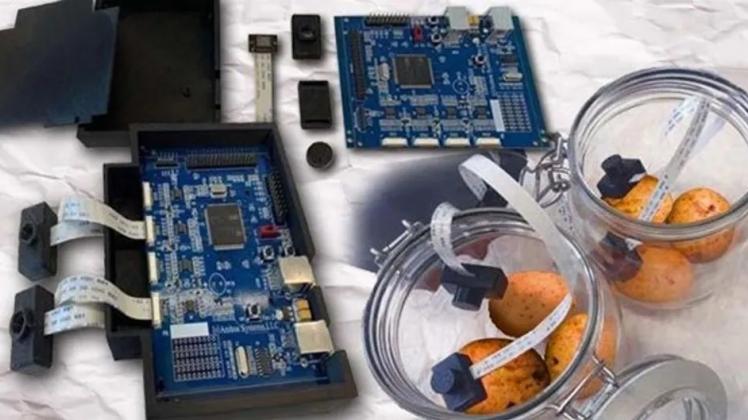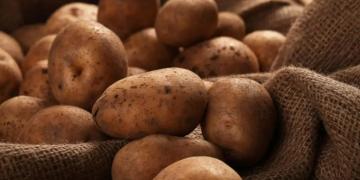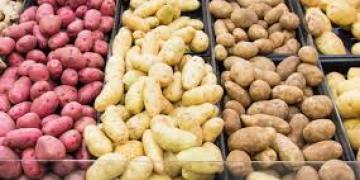Innovaciones: Researchers develop affordable biosensor to detect soft rot in potato tubers
Reducing food loss and waste is a growing concern in the global fight against hunger and food security. In fact, half of the world’s food harvest, which is approximately 1.3 billion tons per year, is lost, with microbial spoilage being the primary

Potatoes, which are the fifth largest food crop in the world after sugarcane, corn, rice, and wheat, are essential to the global diet. However, post-harvest contamination by pathogens remains a significant challenge, affecting the quality of seed, ware, processing, marketing, storage, and shipping tubers.
Detecting latent infections in their early stages is a challenging task, as they do not exhibit any external visual symptoms, which makes diagnosis, tracking, and control difficult. The current detection methods are time-consuming, destructive, and have limited sensitivity for identifying early-stage infections. Thus, there is an urgent need for an improved solution to detect decaying potatoes in the post-harvest supply chain.
A new approach
Volatile organic compounds (VOCs), which are gases emitted by plants and play a role in various processes such as growth, survival, communication, signaling, and pest and disease defense, are an exciting area of research with great potential for rapid application in plant science.
Researchers have identified over 1000 different plant VOCs and discovered differences between the VOC profiles of healthy and infected plants, with infection causing changes in the VOC profiles.
In other words, researchers now understand that VOCs emitted by plant tissues are linked to metabolic or pathological processes within the living plant system and reveal the physiological state of the individual plant. With regards to infected tubers, this is a significant observation.
Traditional approaches to VOC profiling are complicated, and the results of alternatives such as gas sensors and so-called “e-noses” are inconsistent. While e-noses have the potential to solve challenging problems in agriculture, they also have limitations such as extrapolation of results, sensitivity to moisture, cost, and the inability to provide volatile compositions, profiles, and concentrations. As a result, e-nose technology is only used for research purposes at the laboratory level at this time.
Biosensors are a better option for agricultural VOC profiling. Biosensors are low-cost, easy to use in the field and allow for continuous tracking of VOC presence without sample preparation. Whole-cell bacterial sensors, for example, integrate microbes with an analytical format to measure signals, detect the target sample, and track its biological activity by observing different bacterial responses. Results are often available within 1–2 hours and can test for membrane/protein damage.
Detecting tuber soft rot
In 2022, a study from the Volcani Institute and the Hebrew University of Jerusalem was published in the journal Talanta, which focuses on pure and applied analytical chemistry. The study used a whole-cell bacterial biosensor to detect tuber soft rot, a significant potato disease associated with seed and ware production.
The researchers used gas chromatography-mass spectrometry (GC-MS) to specify the differences between the VOC patterns of inoculated and uninoculated potato tubers during early infection and identified five VOC patterns. They then tested for infection by measuring each VOC pattern in a solution in a 96-well plate, in potato plugs, and in whole tubers, and observed a broad cytotoxic effect.
According to the study, the developed whole-cell biosensor system will improve crop management during post-harvest storage and transportation, thereby reducing food loss.
What next?
In summary, VOC profiling is a promising area of research with great potential for immediate application in plant science. However, there is a pressing need for rapid and continuous monitoring of potato health at all stages of the post-harvest process, including storage and transport.
The biosensors developed in this study were specifically designed to detect infected potatoes during storage. Therefore, establishing networks of these devices to monitor entire facilities would provide valuable information on the development of decay during the post-harvest supply chain, enabling rational decision-making in the management of fresh potatoes.
If you want more information about the technology, you can request it from Dr. Eltzov Evgeni at eltzov@volcani.agri.gov.il.
Author: Jorge Luis Alonso G. is an information consultant specializing in the potato crop. He writes marketing materials for Ag-Tech companies. This article was written exclusively for Potato News Today.
Cover photo: Credit Hebrew University of Jerusalem
Fuente: https://www.potatonewstoday.com/2023/02/14/researchers-develop-affordable-biosensor-to-detect-soft-rot-in-potato-tubers/




